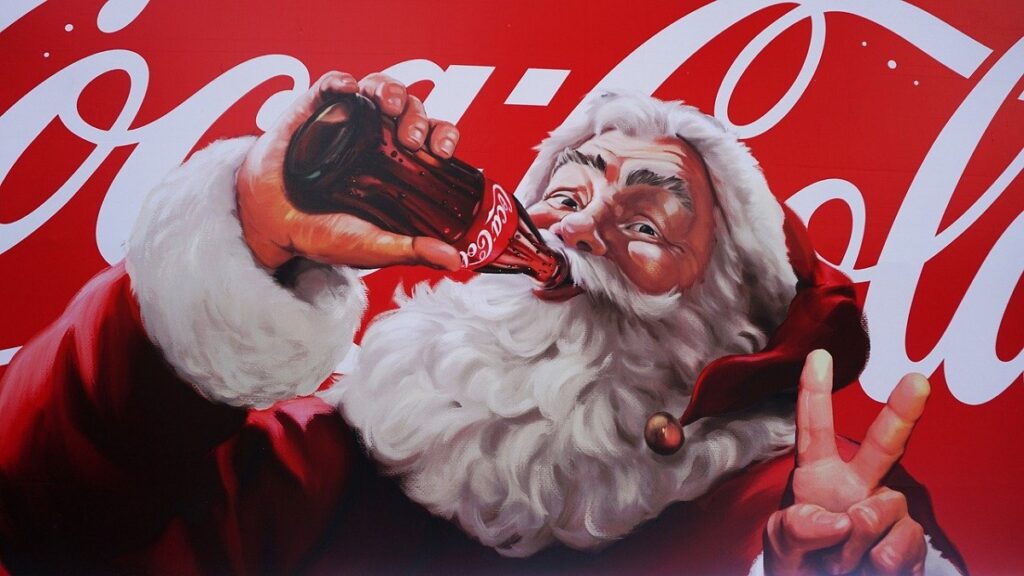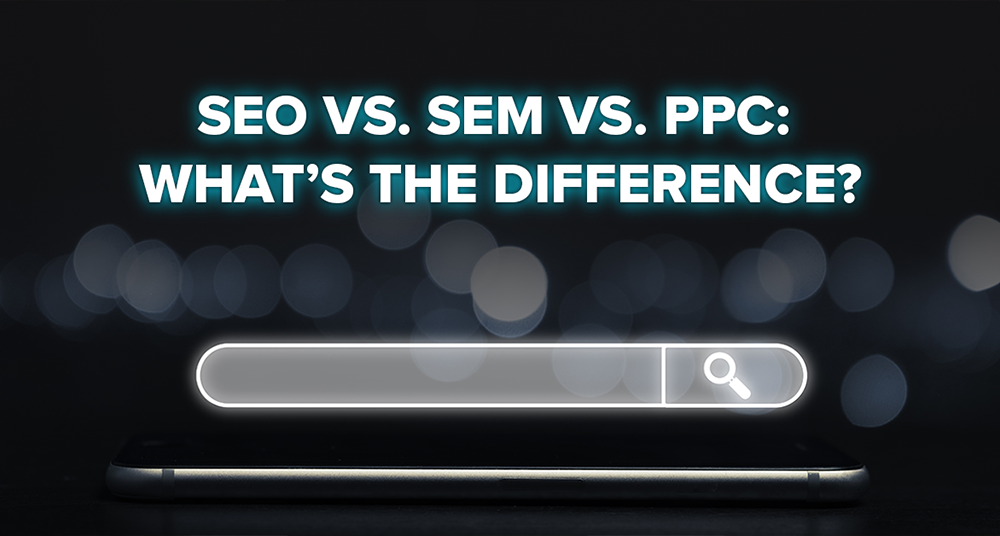What is it that kick-starts your festive mood? Is it the sight of twinkling lights or perhaps the smell of mulled wine and freshly baked gingerbread cookies? Whatever your answer is, you know for certain that the holiday season is officially starting once Coca-Cola launch their Christmas ad campaign. The branding of Coca-Cola has undeniably set standards for business worldwide and there’s no secret that companies can learn a lot from the fizzy drink mogul.
But have you ever wondered how Coca-Cola became the festive brand we all know today?
How it started
Back in the 19th century, more precisely in 1886, a pharmacist named John Pemberton invented a drink that will become the staple beverage to accompany almost any meal across the globe. Coca-Cola was born in Atlanta, Georgia, as a soft drink syrup that was mixed with carbonated water and was first sampled at Jacobs’ Pharmacy where it was pronounced ‘excellent’ and sold for 5 cents a glass.
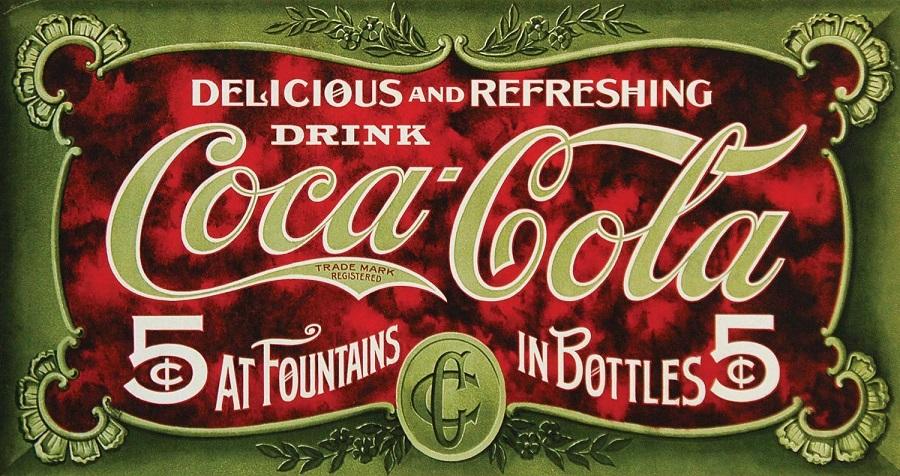
Though currently a global star, selling approximately 1.9 billion drinks in 200 countries worldwide, the “Delicious and Refreshing” carbonated drink didn’t do all that well in its starting days and only sold around 9 servings a day.
Dr. Pemberton and his bookkeeper Frank Robinson gave the drink the name Coca-Cola and designed the well-known cursive script that is now part of their distinctive logo and a trademarked script. Still, the two men achieved no real success with their creation because they did not have a marketing plan, and later in 1888 shortly before his death, Dr. Pemberton sold his business.
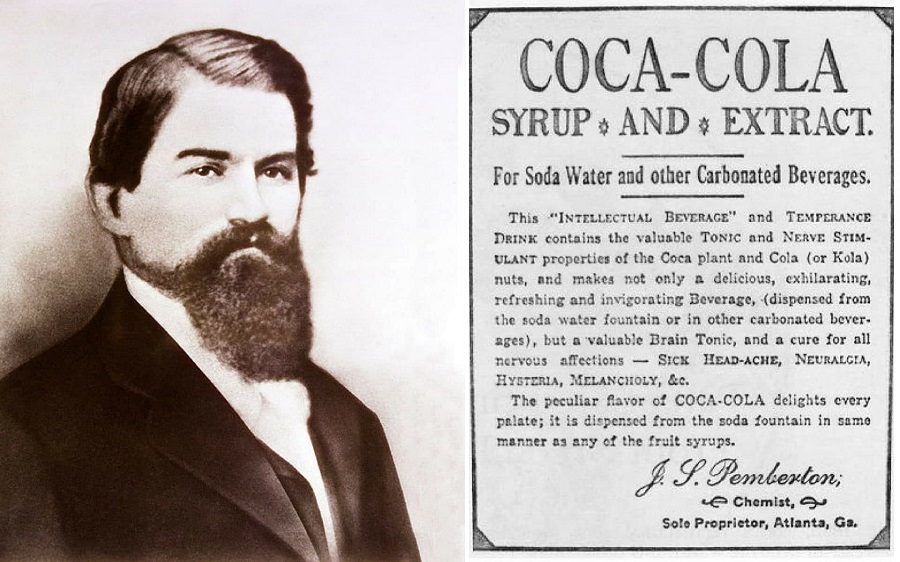
The initial marketing efforts
The Coca-Cola brand marks its first-ever marketing efforts by offering coupons to customers to sample the drink for free, which made the move very innovative as back in the 1890s and 1900s coupons and vouchers were not a popular occurrence.
One of the original Coca-Cola ads was a poster that featured American model and actress Hilda Clark, who was also the first woman to be featured in a Coca-Cola tin tray.
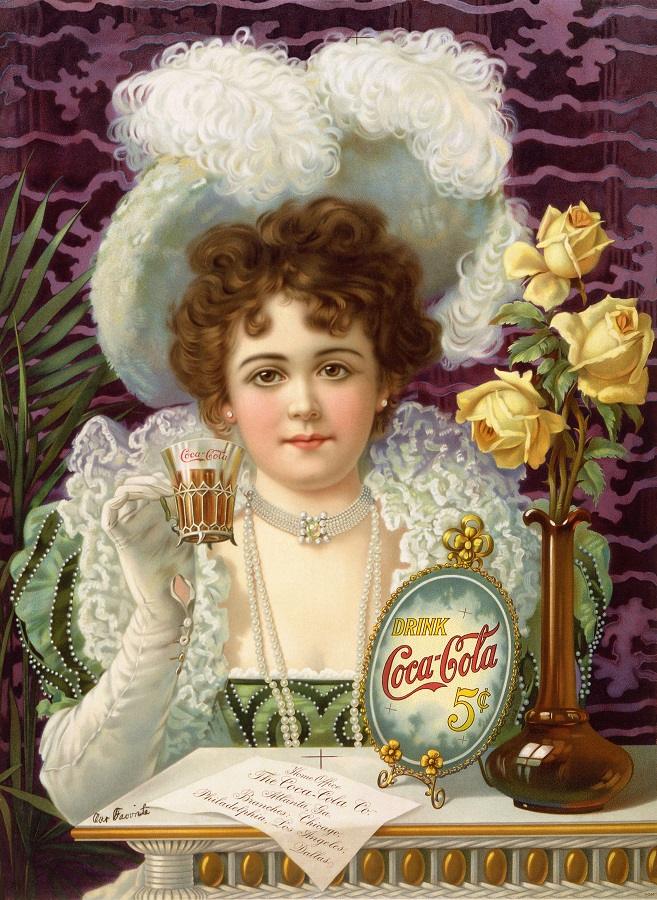
In the 1890s companies and marketers were focusing mainly on using color and featuring people in their advertisements, especially women. Later, in the 1900s the style of advertisement slightly changed, from visual to textual promotion, but from a creative aspect, they lacked impact. Color and people were brought back to life for the 1910s ads, which still featured a heavy set of textual descriptions in the poster. In the 1920s the advertisements started to focus on people’s financial and social status, separating the rich and the poor. The decade of the “Roaring Twenties” marked a serious political and social change, as well as the birth of consumer society.
Between the 1920s and 1930s, Coca-Cola’s style slightly changed its approach, delivering a more straightforward message, but still keeping the consistent oil painting-like image. The textual message was still very much present in the posters but visibly reduced in comparison to the previous decades.
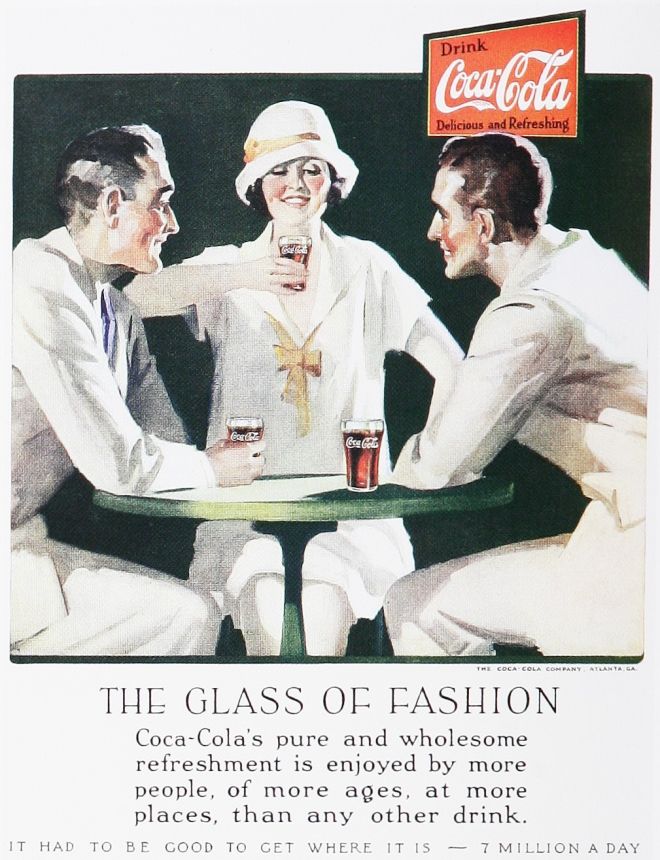
The beginning of the Coca-Cola Christmas Campaigns
Undeniably, we cannot talk about the branding of Coca-Cola without mentioning their Christmas advertisements and marketing campaigns, which are one of the most known worldwide, if not the most anticipated. A common belief has been that Coca-Cola has created the Santa Claus we know today in a move to boost brand awareness.
Though it might make sense, given he is dressed in Coca-Cola’s trademark colors red and white, this is not exactly true.
The image of the jolly Santa Claus
The iconic Santa Claus character was born in 1931 when Coca-Cola hired an artist for a commission illustration. Painter and illustrator Haddon Sundblom was asked to portray Santa Claus drinking Coke on Christmas Eve in the form of an oil painting. Inspired by a Cement Clarke Moor poem, “Twas the Night before Christmas,” Sundblom created the legendary jolly character of Santa we know and love today, giving him a round figure, flushed cheeks, and a fluffy white beard.
Between 1931 and 1964, Sundblom’s illustrations for Coca-Cola showed Santa Claus delivering presents, opening and reading letters, taking a break to drink some Coke, as well as playing with children in the houses he delivered toys.
Even though the company had very little branding knowledge, Coca-Cola and Sundblom managed to create an iconic character, that will later be replicated and will inspire artists, writers, and filmmakers worldwide.
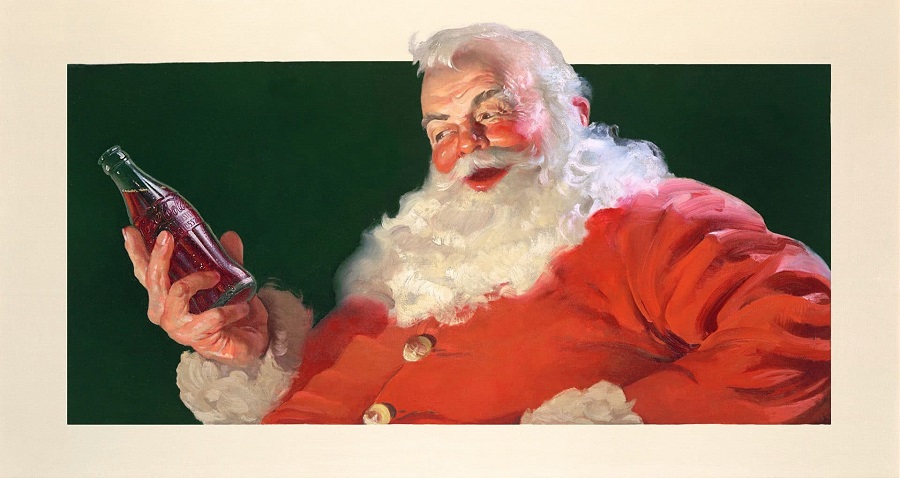
Holidays Are Coming: Featuring the ultimate festive brand
Apart from the chubby and adorable Santa Claus as well the festive visuals, what sets Coca-Cola apart from other brands, is the company’s remarkable sense of customer-centric marketing.
The branding of Coca-Cola has been impactful for decades, with catchy slogans such as “Thirst Knows No Season” in 1922, “Where There’s Coke There’s Hospitality” in 1948, to “Red, White and You” in 1986.
In 1995, Coca-Cola launched their Christmas advertisement titled “Holidays Are Coming” which first featured the now-iconic red Coca-Cola trucks with the Santa Clause illustration by Haddon Sundblom. The Christmas Caravans ad campaign marked epic success and they continued to be featured in ads for several years later.
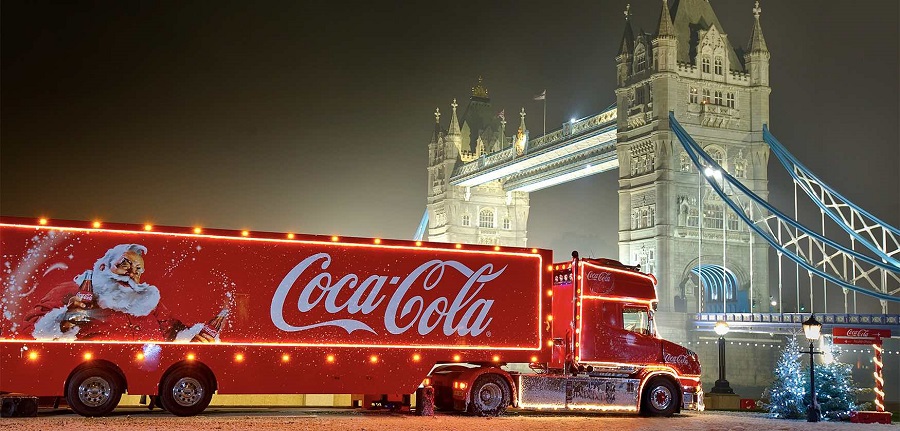
Fast forward to today, after almost two years of a global pandemic, Coca-Cola launched the latest campaign titled “Real Magic.” Encompassing what Coca-Cola’s branding has represented for more than 130 years, the new TV ad “Chimney” spotlights the ‘real magic of human connections.’
The wholesome and heartwarming “Chimney” features a young boy who moves into a new home with his mom just before Christmas, when he realizes that the building has no fireplace or chimney for Santa Claus to deliver presents. He decides to build one himself, and when the neighbors take notice of what the little boy is doing, they decide to help him turn his idea into reality.
Not just a Christmas brand
Although it’s very difficult to ignore the connection between the festive theme and Coca-Cola, the brand is more than just a Christmas story.
In its 130+ years of existence, Coca-Cola has managed to create and maintain its brand voice, resonating with joyful memories and celebrations. It’s not by chance that Coke remains a crowd favorite, rather the identity and image that the company has chosen to adopt and nourish over the decades. Since its first ad, each campaign Coca-Cola creates uses meticulously selected messages and images to inspire feelings of joy, community, and togetherness with customers.
Marketing lessons about the branding of Coca-Cola we can learn from
1. Coca-Cola is the king of consistency
Being part of the global market for over 130 years provides you with plenty of experience, however, it can also put you at a slight disadvantage when you attempt to stay relevant. Coca-Cola has managed to keep a fresh approach while staying consistent with the initial brand message – enjoying a Coke.
Did you know that 94% of the population recognizes the Coca-Cola logo?
Coca-Cola’s consistency also shines through their timeless logo and the distinct, cursive, trademarked script, as well as the bright red color, which according to color psychology, stimulates appetite and increases heart rate. Numerous studies have also shown that the red color can spark impulse purchases, while the white cursive script can stimulate passion.
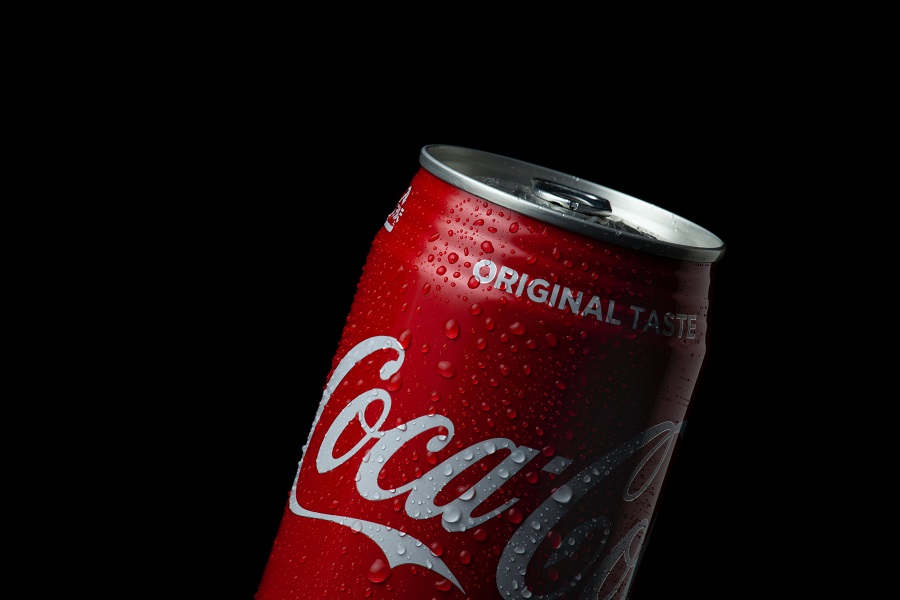
2. Coca-Cola prioritized brand over product
One of the ways Coca-Cola has remained as successful is marketing itself as a company that focuses on the brand and not on its product.
In the 1970s, the company started to create the connections between Coke and happiness, friendship, and good times, advertising the fizzy drink with taglines such as “Things Go Better with Coke.”
Celebrating friendship and focusing on togetherness was showcased again in the 2000s, through the global campaigns “Open Happiness” and “Taste The Feeling”, as well one of their more memorable campaigns “Share a Coke”, for which Coca-Cola had printed names on cans and bottles, inspiring people to buy one for their loved ones or for themselves.
3. Coca-Cola remained relevant
Relevance goes hand-in-hand with consistency. This is the way Coca-Cola has remained a relevant brand for more than one century. The experience that Coca-Cola is built around is positivity, just as it started, however, the company manages to make the most of today’s popular culture to remain modern and relevant.
To establish and maintain relevance and consistency, Coca-Cola takes a popular subject and puts its own spin on it, while conveying the century-long message about happiness and sharing experiences.
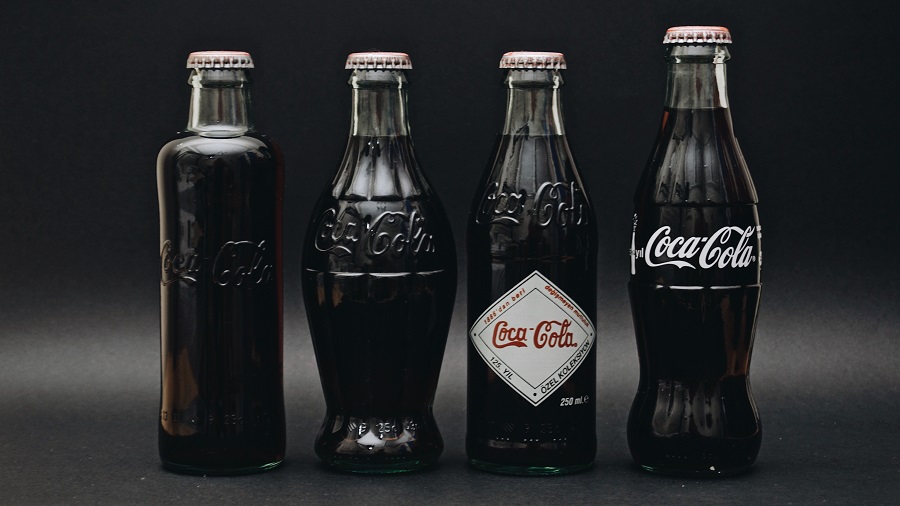
Final thoughts
Creating a successful brand takes more than a good product. Creating a successful company means awareness of the long-term values of the company, dedication to building a reputation with your target audience.
Coca-Cola is proof that a brand can build relationships with its customers, by consistently presenting inspiring and relatable stories, conveying beautiful messages which incite joyous emotions, who in turn, cultivate loyalty to the brand.
From the curved bottle, the bright red color, the white swirly lettering, to the tear-jerking ads, the “pshht” sound that makes us thirsty, Coca-Cola is here to stay.
And to that, I’ll say: Cheers to a brand that remains fresh and relevant.
